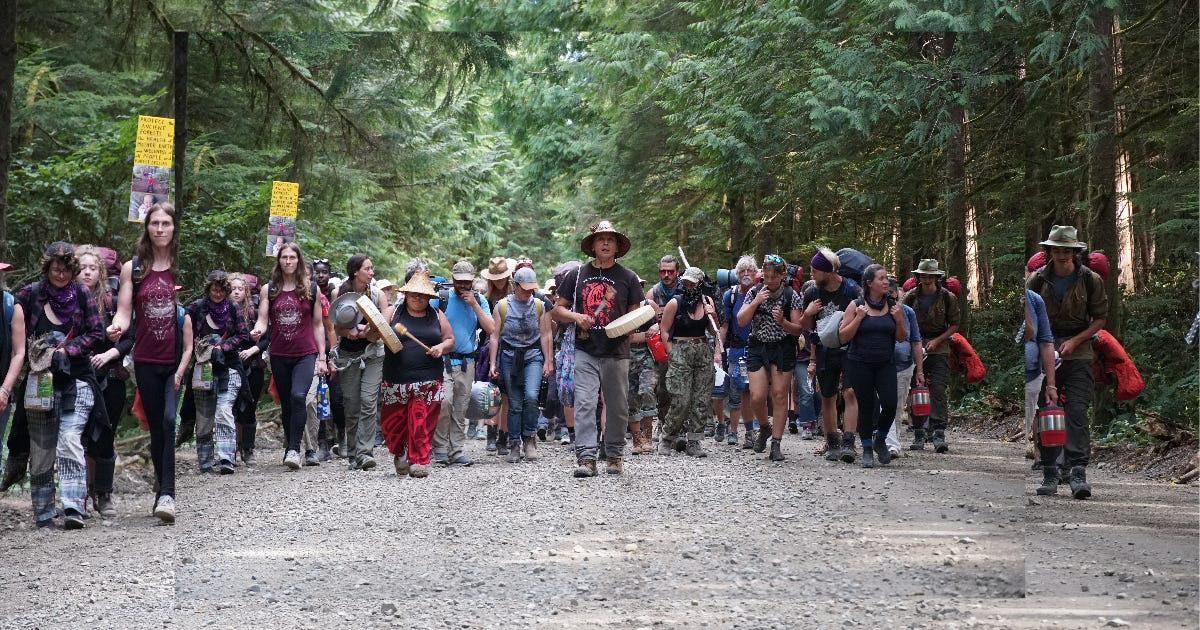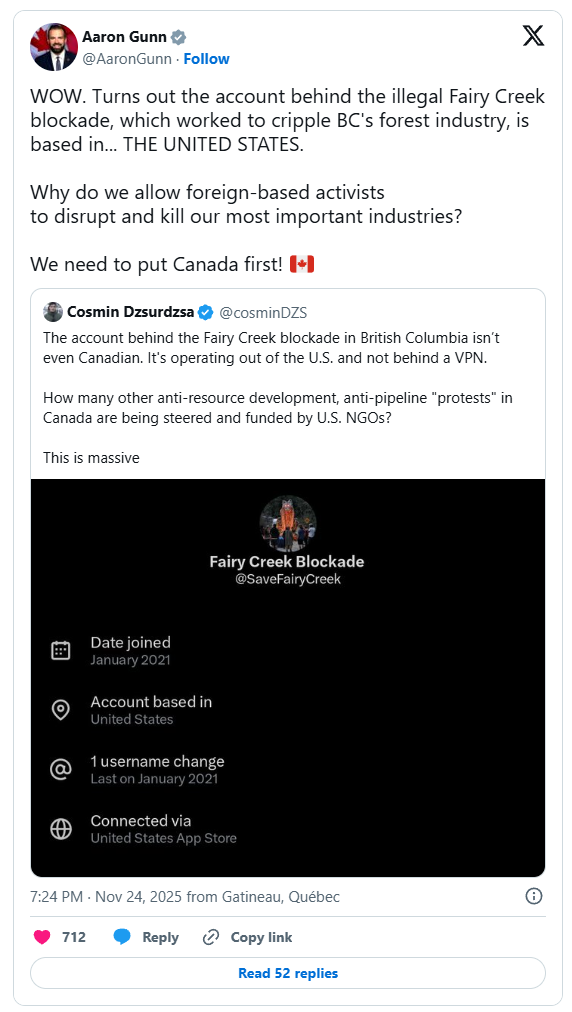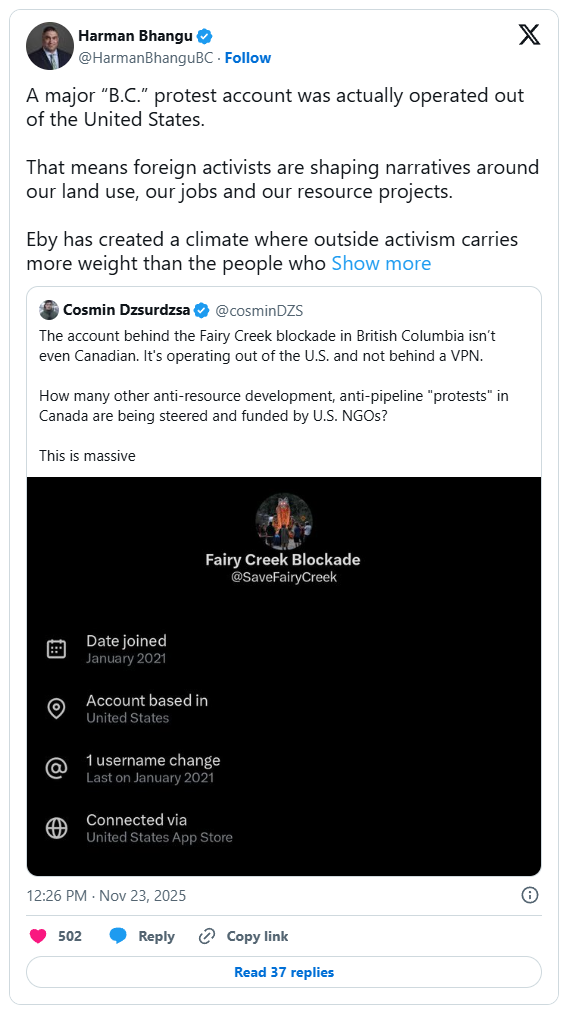New X feature reveals U.S. origin of prominent Fairy Creek blockade account
The supposed “grassroots” Fairy Creek protest against old-growth logging in B.C. has been exposed as having its central social media presence based in the United States, according to a new X feature.
A new X app feature reveals the apparent U.S. origin of a prominent Fairy Creek protest account. The feature, which allows users to look up an account’s operational location, pins the @SaveFairyCreek account to the United States.
The account, a central hub for protest updates and calls for action, does not appear to be using a VPN to mask its location. This suggests its operational footprint is U.S.-based, not Canadian.
The Fairy Creek protests began in 2020 on southern Vancouver Island, in a remote area with old-growth yellow-cedar and Douglas fir. A small blockade against logging road construction escalated into “one of the largest acts of civil disobedience in Canadian history.”
Over months of standoffs, thousands of supporters joined encampments while RCMP units enforced a court injunction.
Police dismantled the main camps after making more than a thousand arrests. The events drew national attention to the future of B.C.’s last intact old-growth forests and exposed deep divisions within nearby First Nations over the role of outside activists.
Conservative Party MP for North Island—Powell River Aaron Gunn reacted to the possible revelation, asking, “Why do we allow foreign-based activists to disrupt and kill our most important industries?
The revelation has also revived a long-running debate in B.C. about the extent to which foreign actors shape or amplify environmental movements in the province. This discussion gained national prominence more than a decade ago through the work of independent researcher Vivian Krause. Her investigations into U.S. philanthropic funding helped frame questions about outside influence on Canadian resource-industry disputes.
Krause’s research, including her documentary Over a Barrell, traced financial links between major U.S. foundations — including the Tides Foundation, the Rockefeller Brothers Fund, the William & Flora Hewlett Foundation, the Oak Foundation and the Sea Change Foundation — and Canadian environmental groups actively opposing pipelines, oil-sands development and marine export infrastructure.
She has argued that these grants formed a coordinated effort to restrict Canadian energy production and export capacity, while environmental groups have defended such funding as “standard philanthropic support for climate and conservation work.”
The geolocation of the @SaveFairyCreek X account to the United States mirrors the pattern Krause has documented: environmental activism in Canada often operates within networks of U.S.-based funding, staffing, or digital infrastructure.
If the account is indeed U.S.-run, critics may view it as another example of the foreign involvement Krause has long warned about.
Taxpayers ultimately covered nearly $9 million over six months for RCMP operations enforcing the Fairy Creek injunction in 2021, demonstrating the scale and cost of the conflict.





